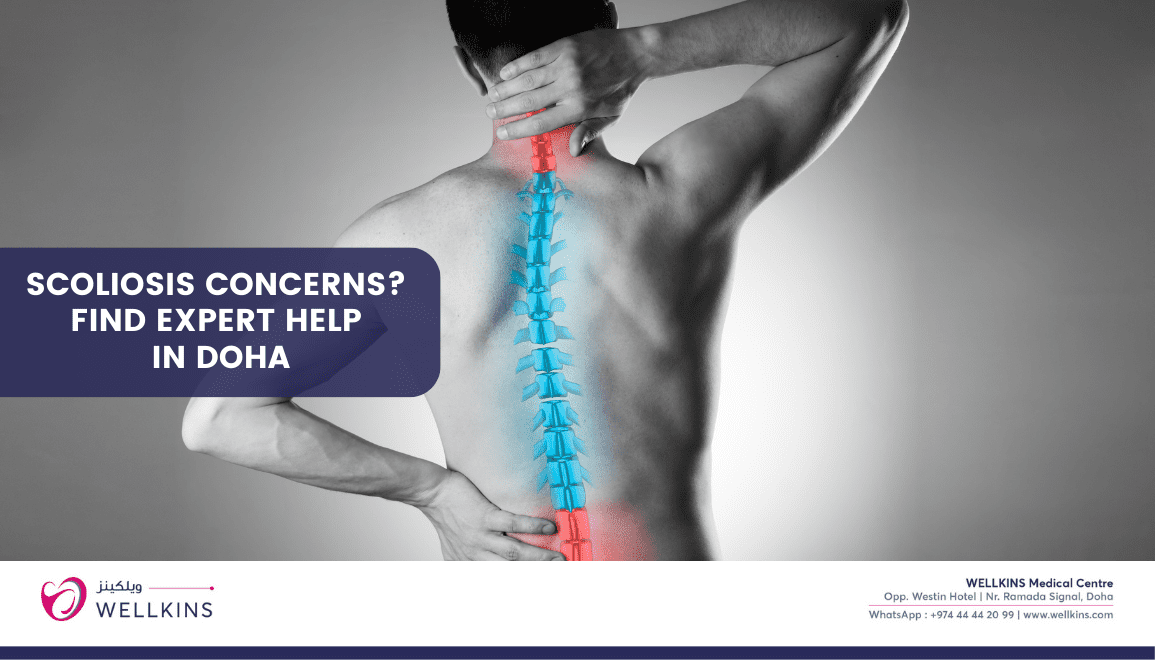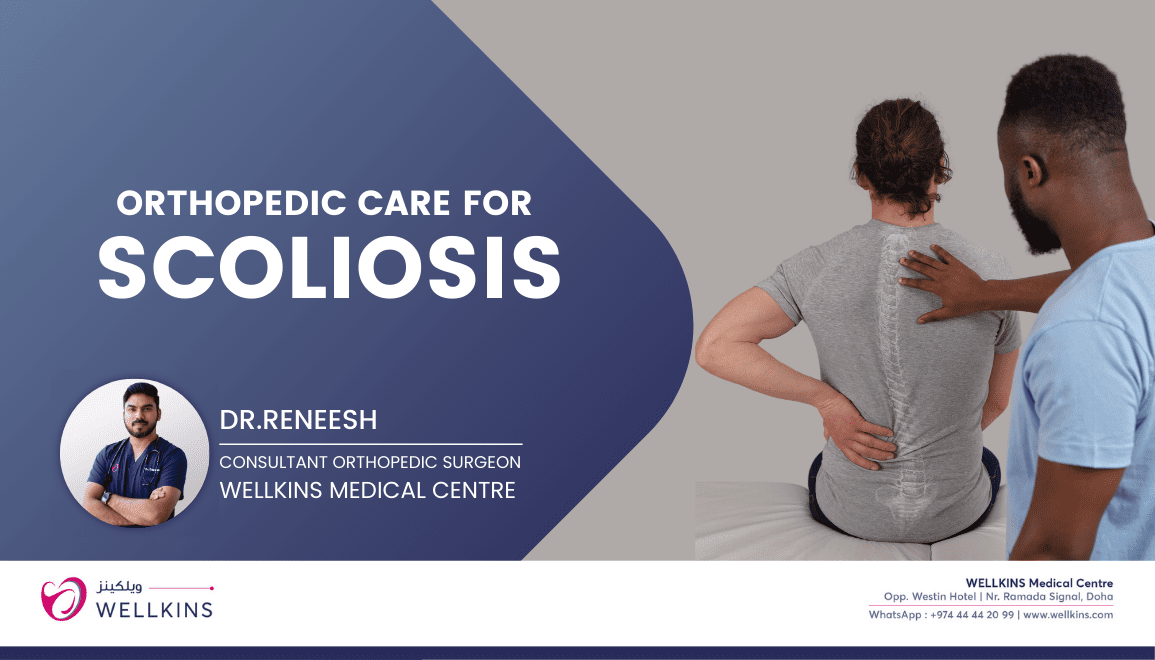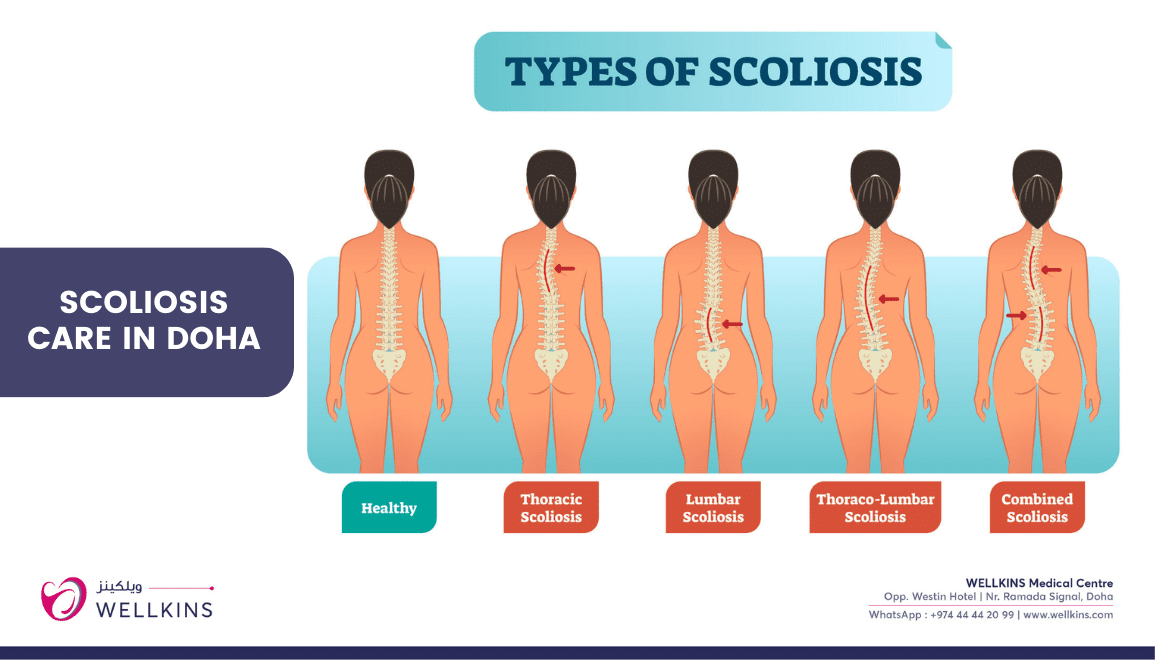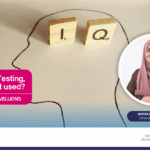Author: Dr.Reneesh (Consultant Orthopedic Surgeon – WELLKINS Medical Centre)
Scoliosis is a complex spinal deformity characterized by an abnormal lateral curvature of the spine, often accompanied by rotational components. As an orthopedic surgeon, I frequently encounter patients with varying degrees of scoliosis, from mild cases requiring observation to severe deformities necessitating surgical intervention. This blog aims to provide a comprehensive overview of scoliosis, including its causes, symptoms, diagnostic approaches, potential complications, and long-term prognosis.
As an orthopedic surgeon, I frequently manage scoliosis, a complex lateral spinal curvature with rotation. This blog provides a detailed look at its causes, symptoms, diagnosis, potential complications, and long-term outlook.
Causes & Risk Factors of Scoliosis
The exact cause of scoliosis is often unknown (idiopathic), but several factors contribute to its development:
1. Idiopathic Scoliosis (Most Common – 80% of Cases)
Adolescent Idiopathic Scoliosis (AIS): Most prevalent (ages 10-18), more common in girls.
Juvenile Idiopathic Scoliosis (Ages 4-10)
Infantile Idiopathic Scoliosis (Rare, <3 years)
2. Congenital Scoliosis
Caused by vertebral malformations present at birth (e.g., hemivertebrae, fused ribs).
3. Neuromuscular Scoliosis
Secondary to neurological or muscular disorders (e.g., cerebral palsy, muscular dystrophy, spinal muscular atrophy).
4. Degenerative Scoliosis (Adult-Onset)
Due to age-related spinal degeneration (disc disease, arthritis, osteoporosis).
5. Other Causes
Trauma, infections, or tumors affecting the spine.
Risk Factors
Gender: Females are more likely to experience progression.
Family History: Genetic predisposition plays a role.
Age: Growth spurts (puberty) can worsen curvature.
Neuromuscular Conditions: Higher risk of severe deformity.
Symptoms of Scoliosis
Symptoms vary based on severity:
Mild Scoliosis (Curve <20°)
Often asymptomatic. May notice uneven shoulders, hips, or waistline.
Moderate Scoliosis (20°-40°)
Visible spinal curvature. Mild back pain or muscle fatigue. Clothes may not fit symmetrically.
Severe Scoliosis (>40°)
Significant deformity (rib hump, leaning posture).
Chronic back pain, stiffness.
Breathing difficulties (if thoracic curve compresses lungs).
Rarely, neurological symptoms (numbness, weakness).
Investigations & Diagnosis
Early detection is crucial for effective management. Diagnostic steps include:
1. Physical Examination
Adam’s Forward Bend Test: Detects rib hump or asymmetry.
Leg length discrepancy, pelvic tilt assessment.
2. Imaging
X-rays (Standing PA & Lateral): Measures Cobb angle (curve severity).
MRI/CT: Evaluates underlying causes (e.g., spinal cord abnormalities).
Bone Age Assessment (Risser Sign): Predicts progression risk in adolescents.
3. Blood Tests
Complete Blood Count (CBC) – To check for infections or anemia (e.g., in chronic inflammatory conditions).
Erythrocyte Sedimentation Rate (ESR) & C-Reactive Protein (CRP) – Elevated in infections or inflammatory disorders.
Calcium, Phosphorus, Alkaline Phosphatase – To assess bone metabolism (e.g., osteoporosis, rickets).
Vitamin D Levels – Deficiency can contribute to bone weakness.

Complications of Untreated Scoliosis
If left untreated, scoliosis can lead to:
Progressive deformity (worsening curvature).
Chronic pain (spinal arthritis, muscle strain).
Cardiopulmonary issues (restrictive lung disease in severe curves >70°).
Reduced quality of life (self-esteem issues, mobility limitations).
Nerve compression (rare, but possible in severe cases).
Prognosis & Management
The prognosis depends on curve severity, age, and underlying cause:
1. Mild Cases (<25° in growing children)
Observation: Regular monitoring (X-rays every 6-12 months).
Physical Therapy: Schroth method, core strengthening.
2. Moderate Cases (25°-40° in growing children)
Bracing (e.g., Boston brace): Slows progression (effective if worn 16+ hrs/day).
3. Severe Cases (>40°-50° or progressive curves)
Surgical Intervention:
Spinal Fusion: Stabilizes the spine with rods/screws.
Growing Rods (for young children): Allows continued growth.
Long-Term Outlook
Most idiopathic cases stabilize after skeletal maturity.
Adults with untreated scoliosis may experience degenerative changes.
Early intervention improves outcomes significantly.
Conclusion
Scoliosis is a multifaceted condition requiring tailored management based on individual factors. Early detection through screening (especially in adolescents) and timely intervention can prevent complications and improve quality of life. If you suspect scoliosis in yourself or a loved one, consult an orthopedic specialist for a thorough evaluation.
Read more about the orthopedic services at wellkins here: https://wellkins.com/orthopedics/







